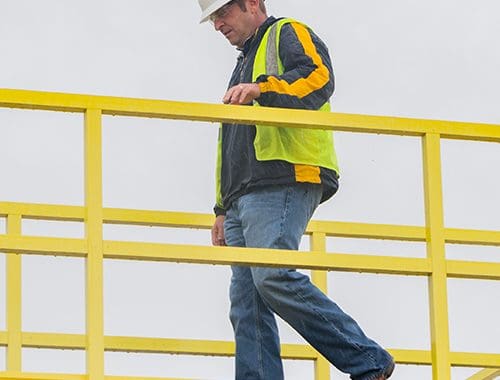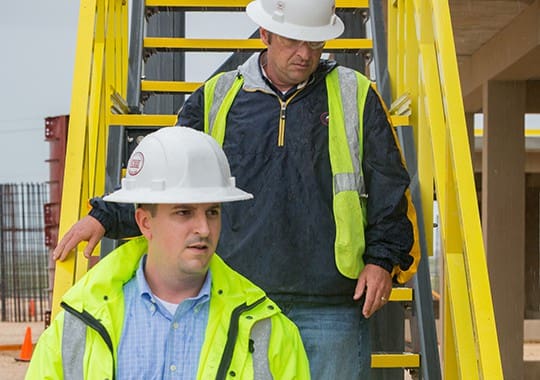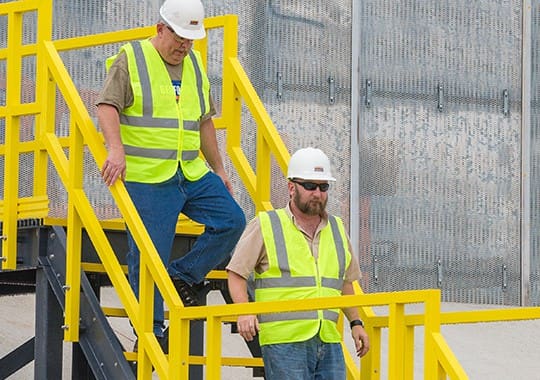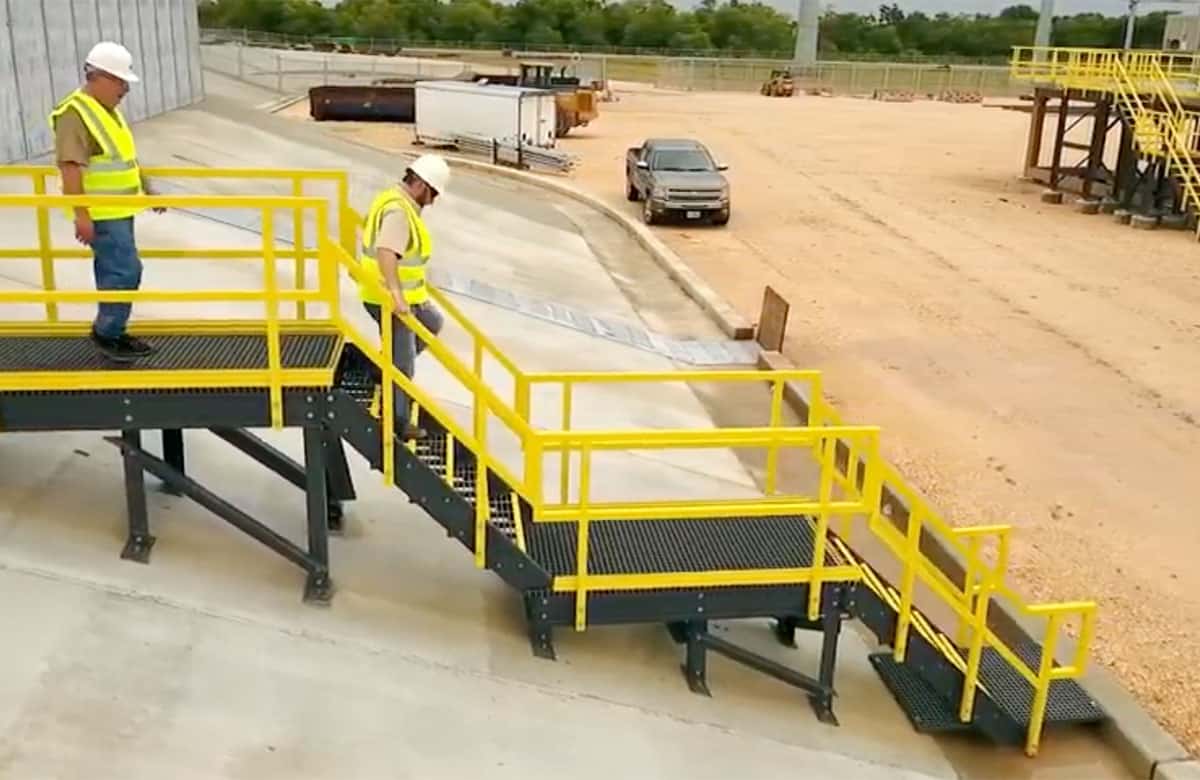1. Grating

Grating is a great way to minimize slip hazards that may cause workplace injury in industrial and commercial settings. It’s often used for flooring, walkways, platforms and catwalks. It is designed to allow liquids and other debris to move through the material. For added safety in the workplace, fiberglass-reinforced plastic (FRP) grating is often equipped with an anti-skid surface. Use grating anywhere people walk where liquid or debris may be present.
Fiberglass Grating



